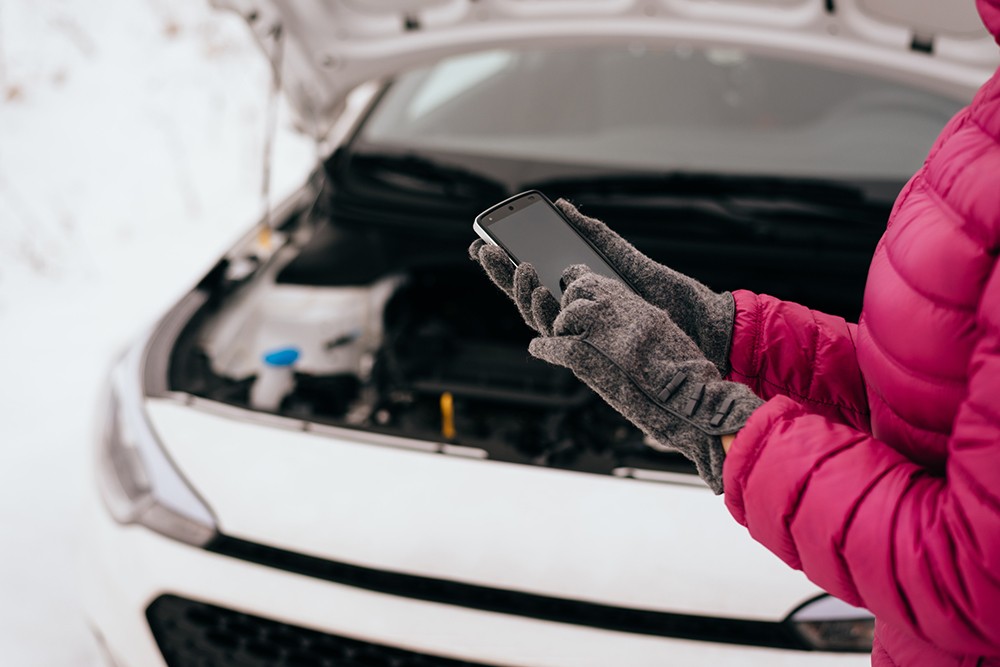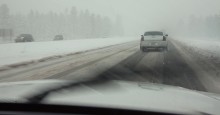
Winter 2023 has caused damage across North America. Keep your vehicle from bearing the brunt of winter wrath.
Here are five simple things to remember to keep your journeys safe this winter, courtesy the National Highway Traffic Safety Administration.
Get a winter safety inspection
The winter safety inspection is crucial for keeping you and your family safe on those icy drives. Winter breakdowns expose occupants to dangerous road conditions.
The National Highway Traffic Safety Administration recommends getting your vehicle inspected for leaks, worn hoses, battery condition, tire wear and climate control system. A properly working climate control system can improve visibility and temperature regulation.
Check vehicle interior, exterior lighting
Vehicles are more difficult to see during storms and bright bulbs can help prevent accidents. New bulbs also can help drivers see road hazards better on dark nights, especially anyone who struggles with night vision.
The problem may not be your eyes, however. Traditional bulbs lose brightness over time--as much as 20 percent within two years, according to estimates from Sylvania.
A thorough inspection can identify burned out bulbs and old bulbs that need replacing. Check headlights, brake lights, turn signals and emergency flashers. If you’re towing a trailer, make sure its lights are functioning properly as well.
Stock your vehicle for inclement weather

Carry items in your vehicle to handle common winter driving-related tasks, such as cleaning off your windshield, as well as any supplies you might need in an emergency. That includes items such as jumper cables, a flashlight and warning devices such as flares. Traveling to areas with snow? Pack some abrasive material such as sand or kitty litter to scatter under tires in case your vehicle gets stuck.
Tire tread wear and safe driving distance
Vehicles are harder to control or stop on slick or snow-covered roadways. NHTSA suggests reducing speed on slippery roads and increasing distance between your vehicle and the one in front of you to avoid collisions.
Tire tread plays a crucial road in your vehicle’s ability to stop on slippery surfaces. Ask your service advisor to inspect all tires for wear.
Also, ask about tire rotation to help improve tire tread longevity. Most manufacturers suggest rotating tires every 5,000 to 7,500 miles (8,000 - 11,000 kilometers). Check the owner’s manual for recommendations on your specific vehicle.
Prepare for winter traffic jams
Keep your gas tank close to full. If you get stuck on a remote road, in a traffic jam, you may need more fuel than you anticipated to get home or simply keep warm. On longer trips, plan enough time to stop to stretch, get something to eat, return calls or text messages and change drivers or rest if you feel drowsy.

For example, snowstorms prompted the California Department of Transportation to close Interstate Highway 80 in the Sierra Mountains for several hours during Thanksgiving holiday. The agency also shut down travel on Interstate Highway 5 in the Tehachapi Mountains for two days during late December. In both situations drivers were stalled for hours.
Anticipating rough winter weather can provide peace of mind and give you confidence to take alternate but perhaps longer routes.
Other tips and suggestions:
Look for leaks, bad hoses and belts. Cold weather can cause old rubber as well as plastic to harden and crack.
Get your vehicle battery voltage tested. Your car requires more starting energy in the winter. Also, cold temperatures can cause a failing battery to go dead overnight.
When replacing a battery, check old cable connections and other charging components such as the alternator.
Check the climate control system for leaks. Also, make sure the window vents are free of obstructions and that the fan is operating properly.
Use Coolant intended for winter temperatures where you expect to drive. While a 50/50 mix of coolant to water may suffice in most climates, your vehicle may need a different mixture in extreme zones. Review your vehicle manual for recommendations.
Ask whether your vehicle is due for a climate control system flush. If antifreeze hasn’t been replaced in several years, the fluid may have lost its effectiveness. Rust particles may clog the system and cause failure.

Take a look at the windshield washer reservoir and fill to the recommended level. Wiper fluid gets used quickly during a single snowstorm or if you are traveling along grimy roadways.
If you live in snowy climates, consider using fluid intended for icy weather. Standard windshield washer fluid freezes inside wiper system tubes and prevents them from working properly.
“No-freeze” fluids are not available in all states or counties. Inspect the fluid container for hazards and restrictions.
Replace windshield wiper blades in midseason to prevent smearing and poor visibility. Old blades can scratch your vehicle windshield and create screeching sounds. They also reduce visibility.
Summer sun dries out and cracks wiper blades. Hardened blades are ineffective during heavy storms. Replace wiper blades yearly to help improve visibility before you encounter the next storm.
Do you live in an extreme environment? Look for blades intended for ice and snow. They are made with rubber compounds intended to remain pliable in freezing temperatures.
Check tire inflation (use manufacturer recommendations) and spare tire. Also check for uneven wear. It’s a sign something may be wrong with the tire and alignment.
Inspect the spare tire for cracks and tread. Rubber degrades after several years, and older tires may need replacement even if they have not been used.
Copyright © 2024 by Sensible Driver. All rights reserved.